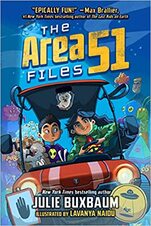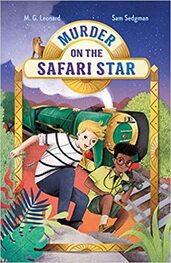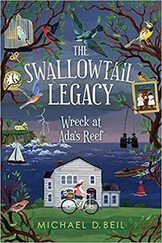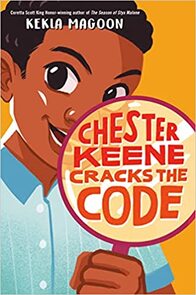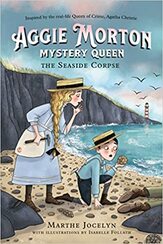I became a lifelong reader, and lover of mysteries, thanks to the Bobbsey Twins. I read every one of Laura Lee Hope’s books featuring the crime-solving kids until I ran out of books to read. I turned my attention to other series and authors, but the Bobbsey Twins is where it all started for me.
It should be no surprise, then, that I eventually turned my attention to writing for kids and that I spend a good deal of time writing mysteries. Each May, I read the five middle grade mysteries nominated for the Edgar Award for Best Juvenile Mystery and every year, in addition to reading some fantastic books, I learn something that I can apply to my own writing. This month, I’ll share what I learned with you.
written by Julie Buxbaum
illustrated by Lavanya Naidu
What I learned: Humor
Readers love humor and there’s no shortage of it in this book. On a secret military base filled with aliens there are plenty of opportunities to create funny characters (i.e. the Zdstrammars, little bubbles who talk way too loud) and situations (i.e. car chases in golf carts that can only go 25 miles per hour). If you’re looking for ways to inject a fee laughs into your book, check out THE AREA 51 FILES.
written by M.G. Leonard and Sam Sedgman
What I learned: Pacing
Most of us struggle with pacing at some point. The Safari Star is a moving train, traveling through Southern Africa. The story is literally on the move. How do the authors keep the story well-paced? They take actual breaks in the train trip. This is done by injecting safari excursions into the trip which provide a change of pace to the story and gives the reader a break from what could otherwise be a monotonous ride down the tracks.
written by Michael D. Beil
What I learned: Setting
Of the five nominees this year, SWALLOWTAIL is to me, the most atmospheric. This is due, in no small part, to how Beil establishes the setting. Set on Swallowtail Island, the reader is giving an engrossed tour of the island which pulls them into the story. This isn’t done through lots of exposition, though. It’s done as the characters interact with one another and the island. The setting truly becomes another character in the story, influencing choices and introducing obstacles. If you need help with establishing setting (who doesn’t?) check out this book.
written by Kekla Magoon
What I learned: Emotion
I personally struggle at times with character emotions so I loved this book. In addition to being a terrific book, it’s a masterclass in allowing emotion to reveal character. Too often, characters react in ways that make logical sense outside of the story but don’t make much sense in the context of the book. Magoon does a terrific job of helping us understand Chester’s emotional state as the book moves along so that we anticipate his emotions. In fact, readers will wait in suspense for one particular meltdown we know is coming even before Chester does. I can’t recommend this book enough.
written by Marthe Jocelyn
illustrated by Isabelle Follath
What I learned: Character
This year’s Edgar Award winner is an outstanding example of developing a cast of characters for a book. Not only are no too characters alike, their differences drive the conflict we see in the story, further revealing things about themselves, and others, along the way. The disrespectful husband antagonizes his talented and motivated wife. The entitled American businessman fights with the circus owner who’s a man of the people. All of the characters have a story which get revealed, page by page, as we read along. If you’re looking for examples of well developed characters, look no further than THE SEASIDE CORPSE.
Well, that’s all for this month. I recommend you check out these books, or other award nominees and winners, to see what you can learn. Happy writing and have a magical month.
Bryan Patrick Avery is an award-winning poet and author of more than a dozen books for children including the middle grade collective biography, BLACK MEN IN SCIENCE, illustrated by Nikita Leanne and THE FREEMAN FIELD PHOTOGRAPH, illustrated by Jerome White. Bryan is also the author of the middle-grade story, “The Magic Day Mystery”, which appears in SUPER PUZZLETASTIC MYSTERIES, the Jake Maddox JV Mysteries OFF BASE and SOCCER SUSPICIONS, the early chapter book series, MR. GRIZLEY’S CLASS, illustrated by Arief Putra, and the picture books EARL LEARNS A LESSON and MAX’S MAGIC CHANGE, both illustrated by Roman Diaz. He is the 2021 recipient of the SCBWI Work in Progress Award for his chapter book mystery THE ROBOT IN THE LIBRARY.
Bryan serves on the Board of Directors of the Northern California Chapter of Mystery Writers of America and is an Amplify Black Stories Fellow, a joint program presented by the Brown Bookshelf and the Highlights Foundation. Bryan lives in Northern California with his family.




